2024 Redistricting
Take a walk around this train station and you will see many of the same things that Art Bacon, a student at Talladega College, saw when he arrived here by train on January 2, 1961. Four weeks earlier, on December 5, 1960, the Supreme Court in Boynton v. Virginia held that segregation in public transportation facilities such as this was illegal.
Art was returning to college after the Christmas holidays and had taken the train from his home in Florida to Anniston. As he awaited a ride to the College he sat in a waiting room that, under Jim Crow laws, had been reserved for whites.
When Art’s ride arrived he left the station and hopped in the back seat. Suddenly, five angry white men appeared, demanding that witnesses identify Art. They attacked the driver, and Art, fearing for the driver’s life, left the vehicle and confronted the men, who proceeded to brutally beat him. (1)
Four days later, Talladega College students and faculty marched peacefully along Gurnee Avenue, at one point circling the police station, in protest of the assault. (2)
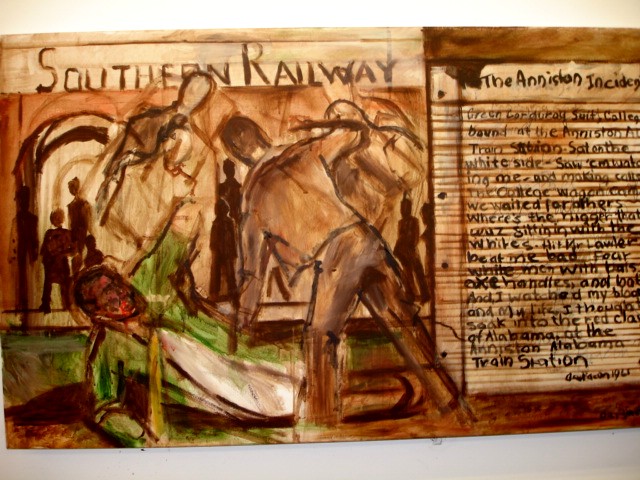
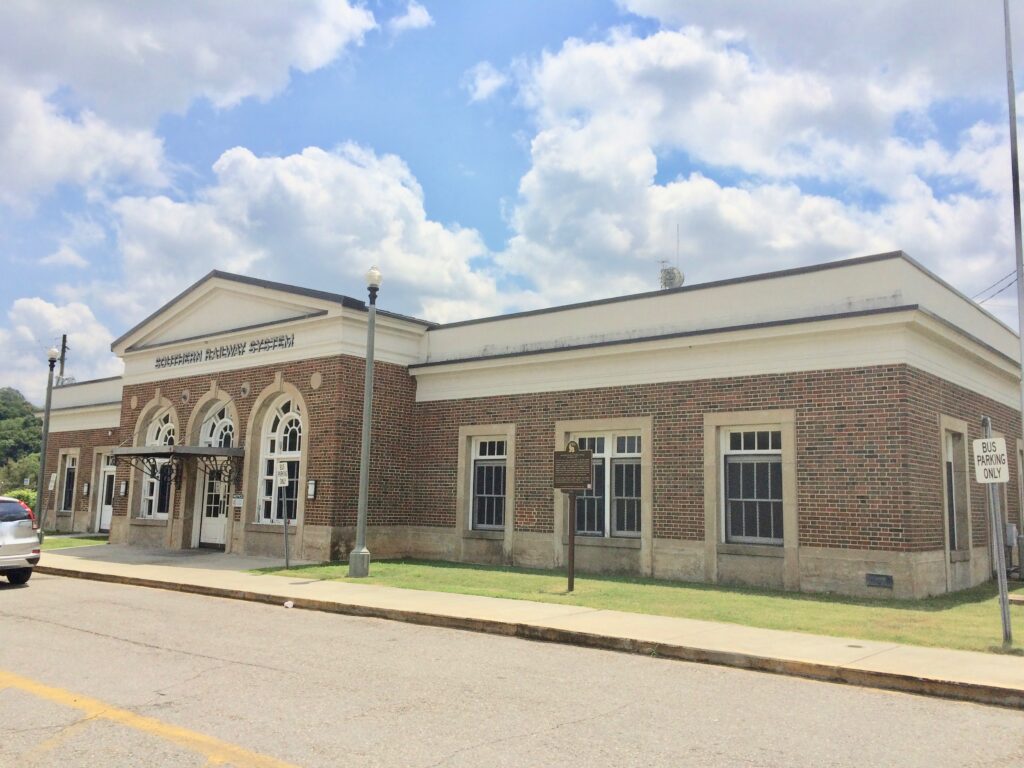
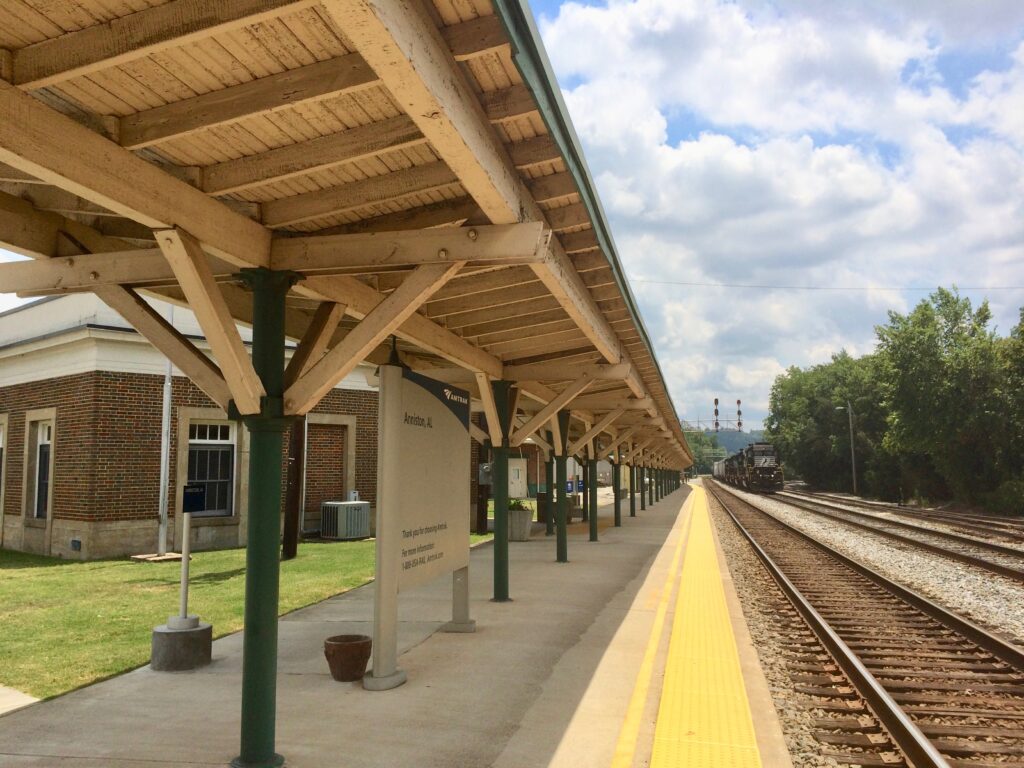
In 1960, the Supreme Court held in Boynton v Virginia that desegregation of public transportation was illegal, but Southern ideologies were not yet prepared for the change. It took brave individuals to challenge the long held ideas about race relations in the South to generate change.
In the years after the Civil War, Southern society grew increasingly segregated due to Jim Crow laws, which determined the cultural norms of how whites and black should and could interact in nearly every aspect of life. Although in theory the laws espoused equality, that was often not the case, and by mid-century, tensions between blacks and whites had risen.
After the events in Anniston, Art Bacon was badly injured and his assailants were never punished. However, instead of letting this egregious act defeat him, Bacon used it as motivation to climb the rungs of academia and artistic expression.
Bacon went on to gain masters and doctoral degrees (1963, 1967) in zoology from Howard University in Washington, D.C., and he was the first black postdoctoral researcher at the University of Miami. (3)
Having now obtained his Doctorate Degree, Dr. Bacon was on a path towards department chairmanship at Howard University. Yet, an offer from his undergraduate alma mater, Talladega College, was too hard to resist. Thus, Dr. Bacon returned to Talladega College until his retirement in 2010, serving as a member of the biology faculty and the dean of Natural Sciences and Mathematics. (3)
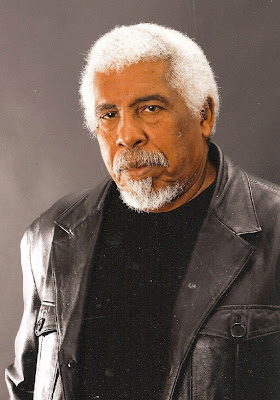
Local “Jim Crow” laws in the first half of the 20th century enforced racial segregation in public transportation facilities throughout the South. The U.S. Supreme Court decision in Boynton v. Virginia (1960) upheld that segregation in these facilities was illegal, yet African American Talladega College student Art Bacon encountered hostility when he arrived by train at this station. As he left the station, he was beaten by five white men for sitting in the formerly “whites-only” waiting room.
Four days later, Talladega College students and faculty marched peacefully along Gurnee Avenue, at one point circling the police station, in protest of the assault.
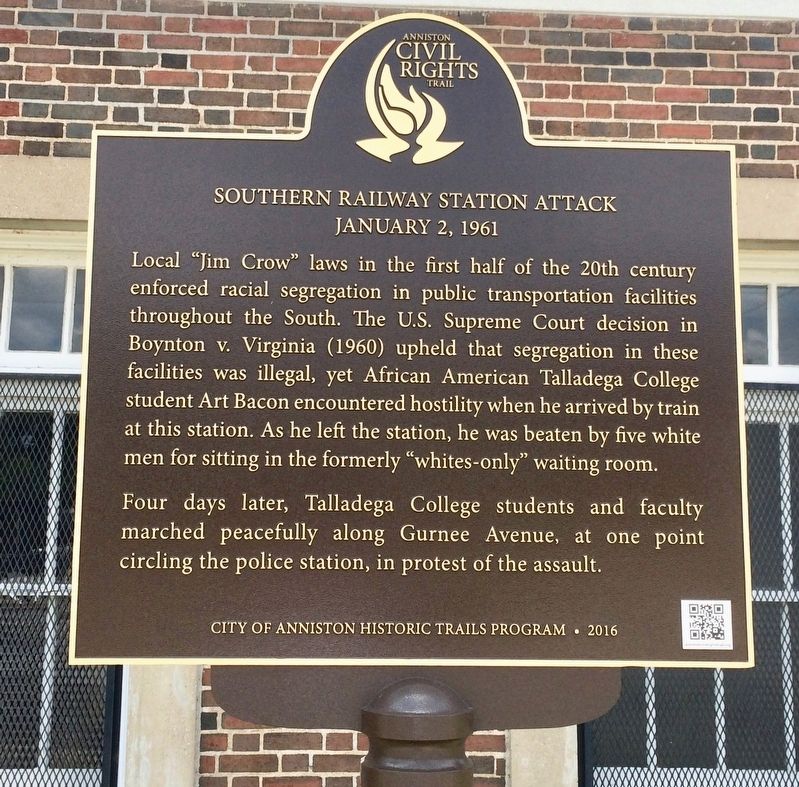
126 West 4th Street, Anniston, Alabama 36201
(1) The Anniston Star, January 3, 1961, page 1A. The Anniston Star Archives. Web. 8 Jan. 2016.
(2) “Trio Jailed In Race Row at City Hall”. The Anniston Star, January 5, 1961, page 1A. The Anniston Star Archives. Web. 8 Jan. 2016.
(3) Huebner, M. (2013, May 15). Art Bacon’s BPL exhibition straddles civil rights struggle and idyllic reflection. AL.com. Retrieved January 24, 2023.

Sign up for our Quarterly Newsletter, upcoming event information, and more! This is the best way to stay informed on the latest news, activities, and happenings throughout the Model City!
Translate
Translate